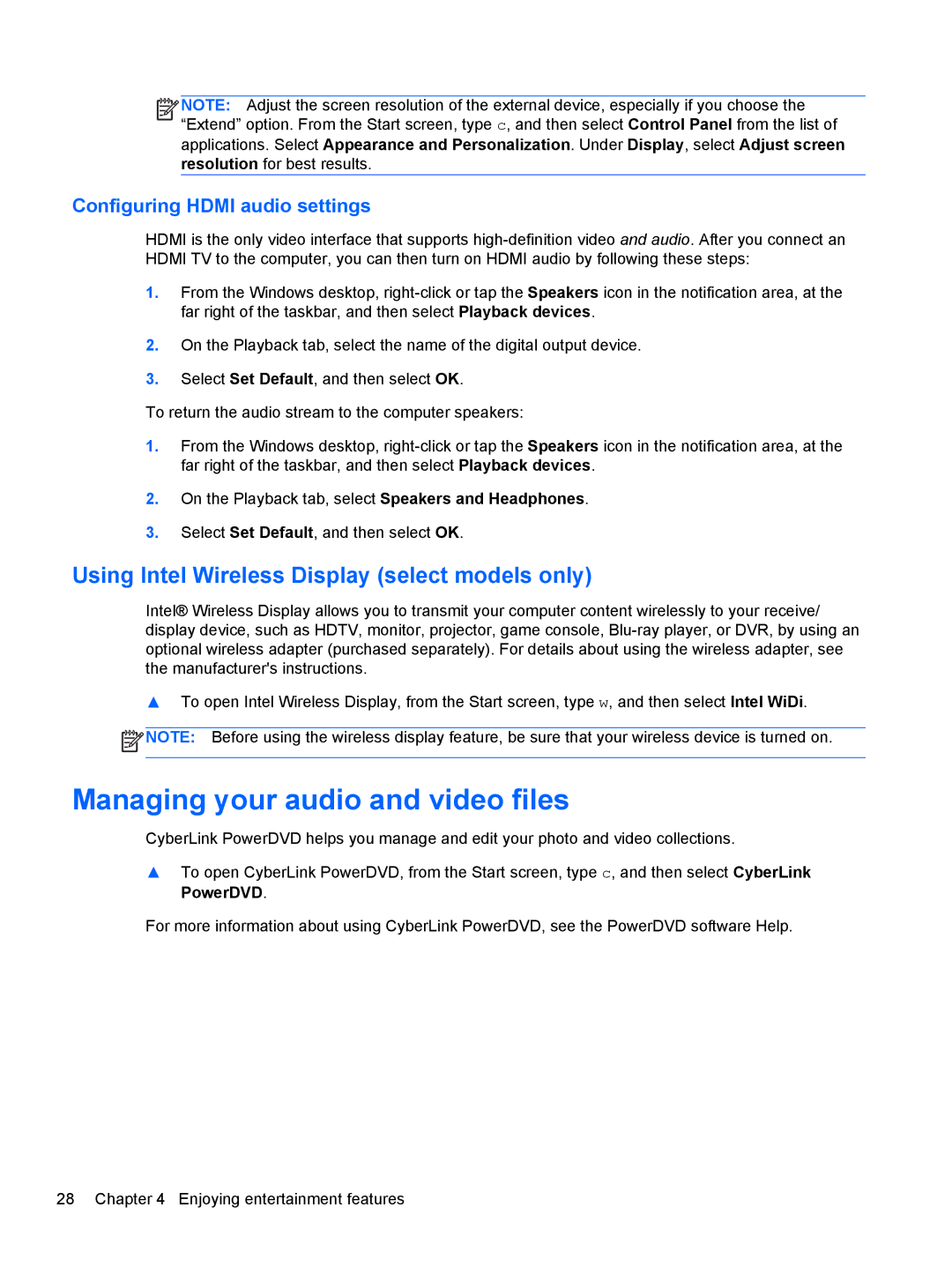
![]()
![]()
![]()
![]() NOTE: Adjust the screen resolution of the external device, especially if you choose the “Extend” option. From the Start screen, type c, and then select Control Panel from the list of applications. Select Appearance and Personalization. Under Display, select Adjust screen resolution for best results.
NOTE: Adjust the screen resolution of the external device, especially if you choose the “Extend” option. From the Start screen, type c, and then select Control Panel from the list of applications. Select Appearance and Personalization. Under Display, select Adjust screen resolution for best results.
Configuring HDMI audio settings
HDMI is the only video interface that supports
1.From the Windows desktop,
2.On the Playback tab, select the name of the digital output device.
3.Select Set Default, and then select OK.
To return the audio stream to the computer speakers:
1.From the Windows desktop,
2.On the Playback tab, select Speakers and Headphones.
3.Select Set Default, and then select OK.
Using Intel Wireless Display (select models only)
Intel® Wireless Display allows you to transmit your computer content wirelessly to your receive/ display device, such as HDTV, monitor, projector, game console,
▲To open Intel Wireless Display, from the Start screen, type w, and then select Intel WiDi.
![]() NOTE: Before using the wireless display feature, be sure that your wireless device is turned on.
NOTE: Before using the wireless display feature, be sure that your wireless device is turned on.
Managing your audio and video files
CyberLink PowerDVD helps you manage and edit your photo and video collections.
▲To open CyberLink PowerDVD, from the Start screen, type c, and then select CyberLink PowerDVD.
For more information about using CyberLink PowerDVD, see the PowerDVD software Help.
